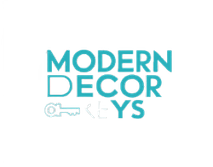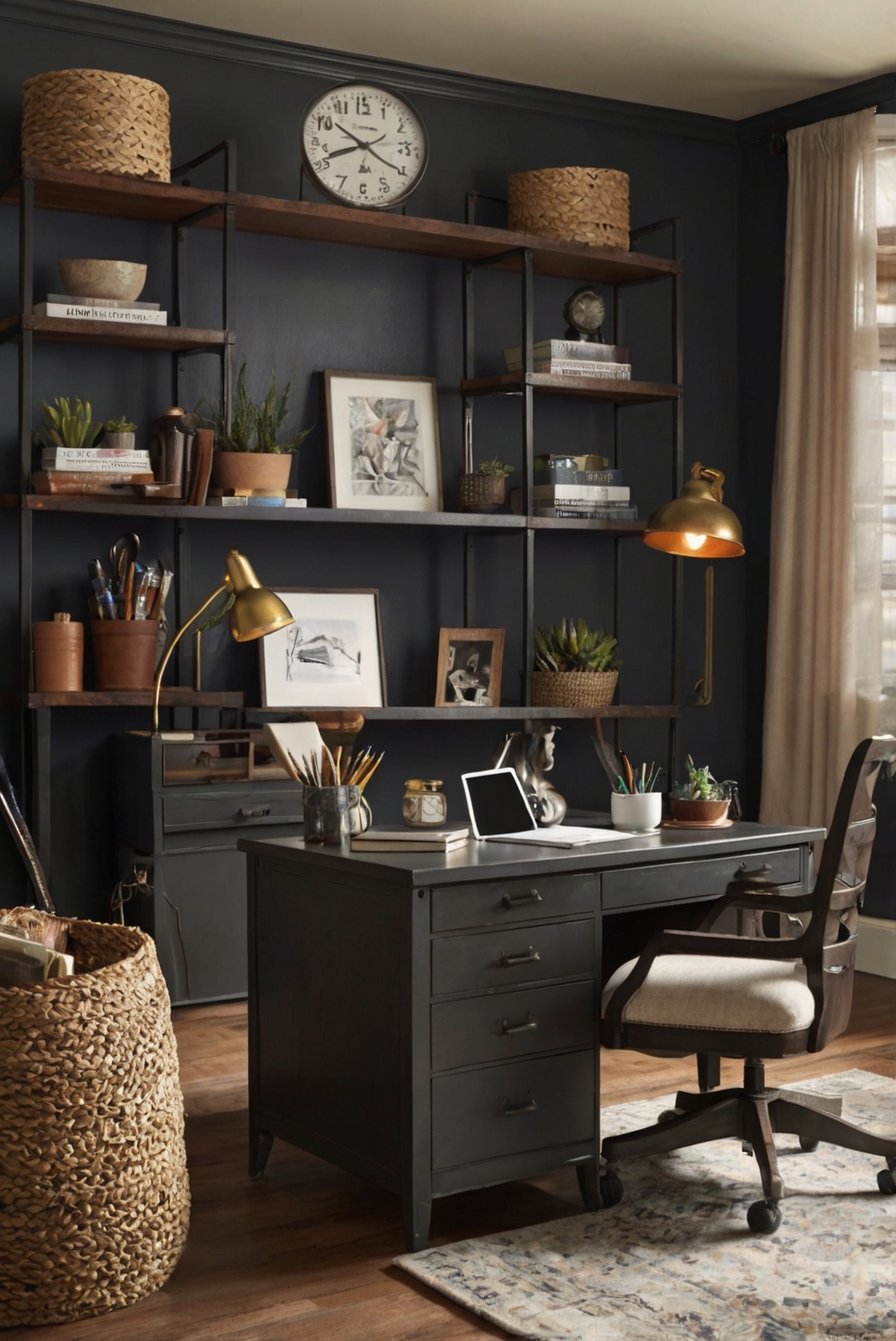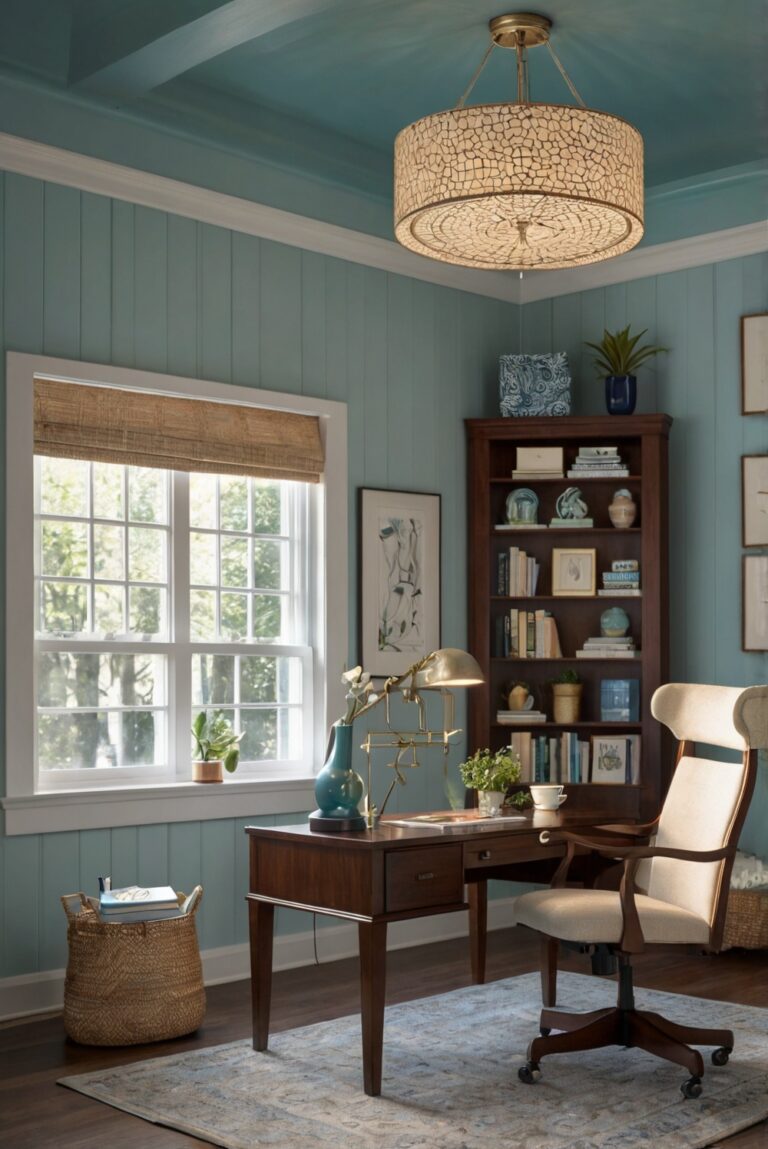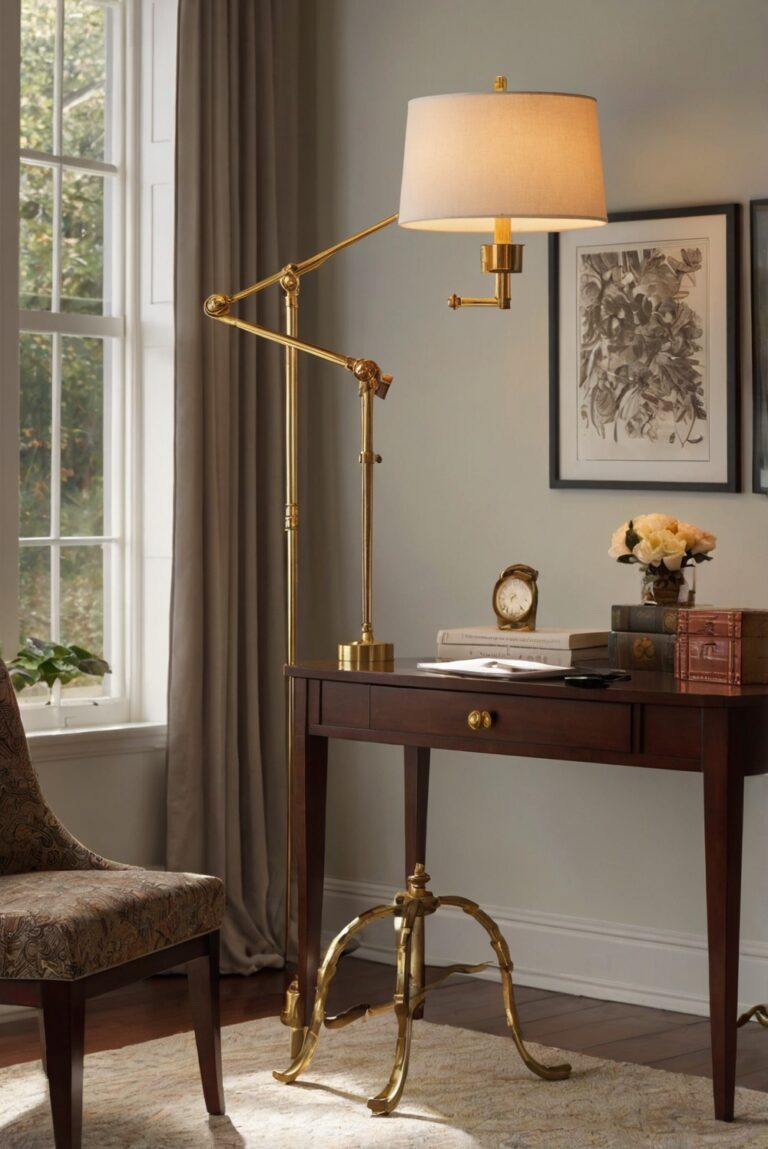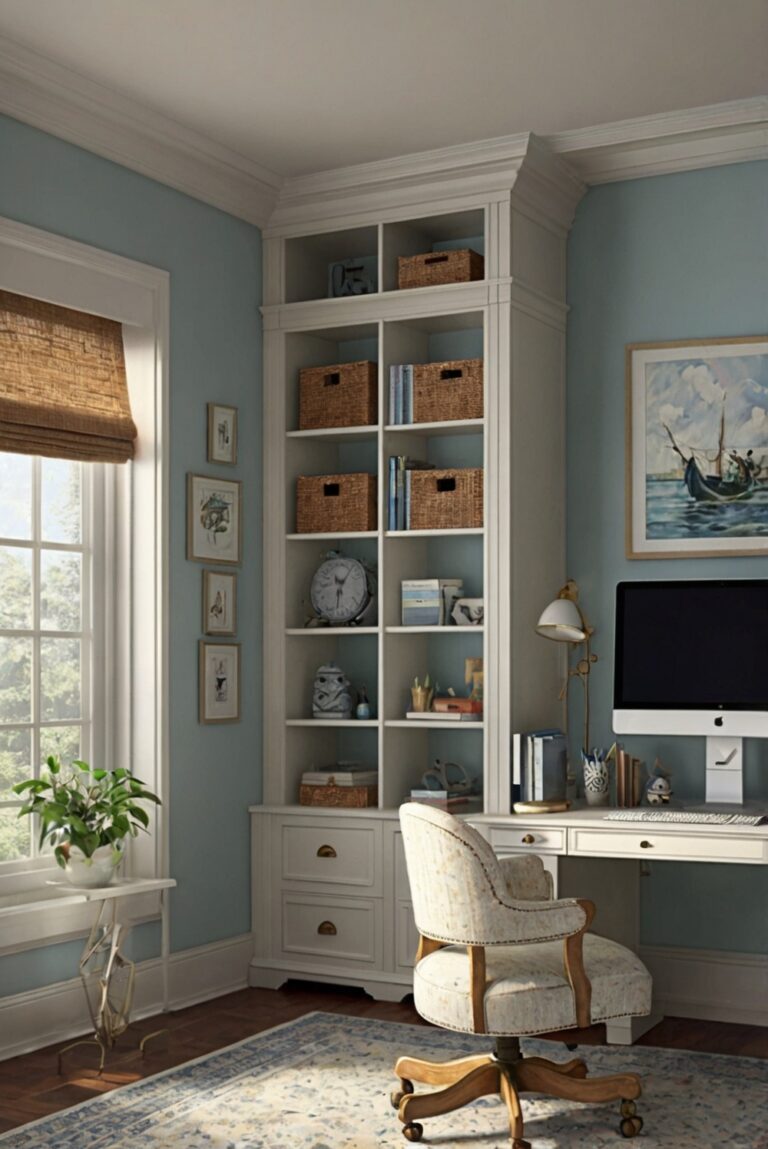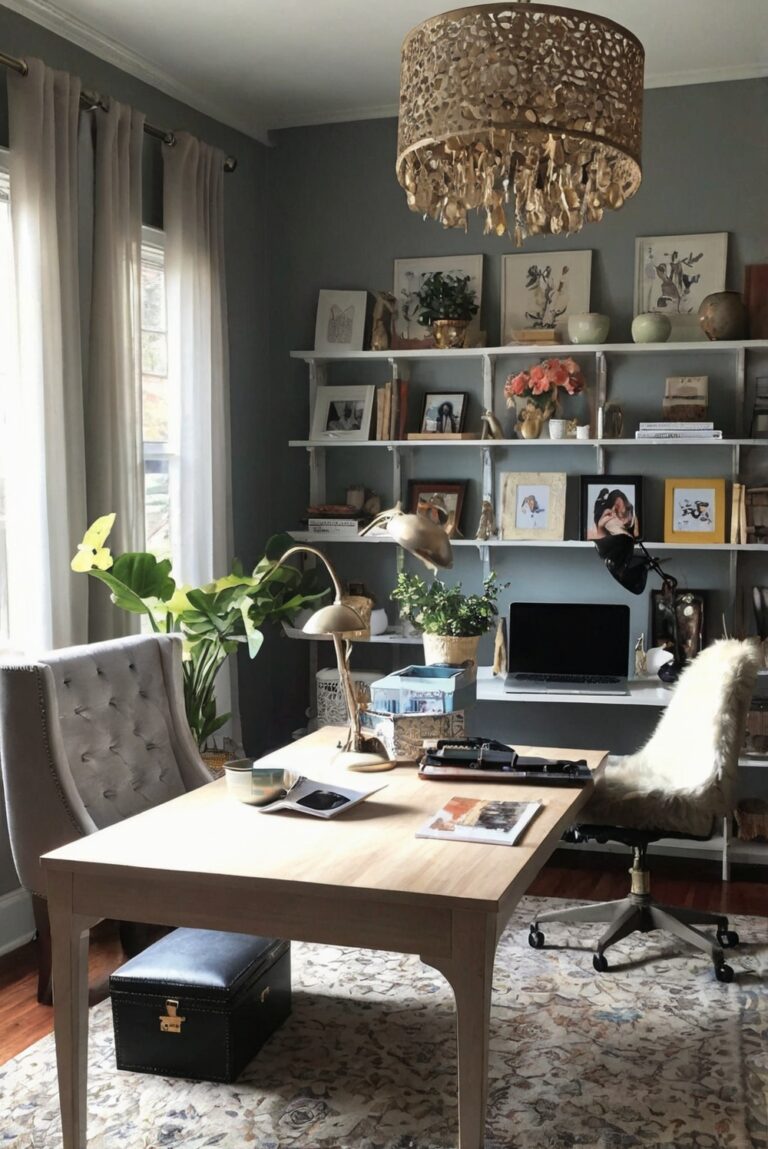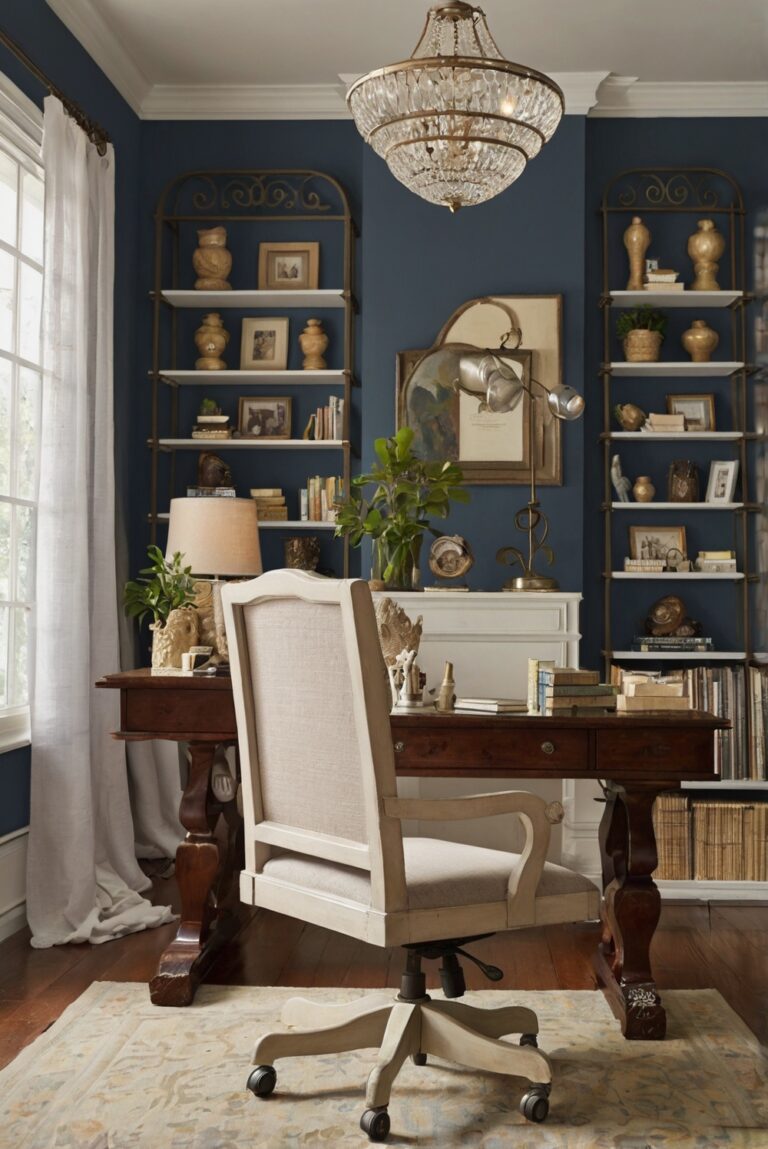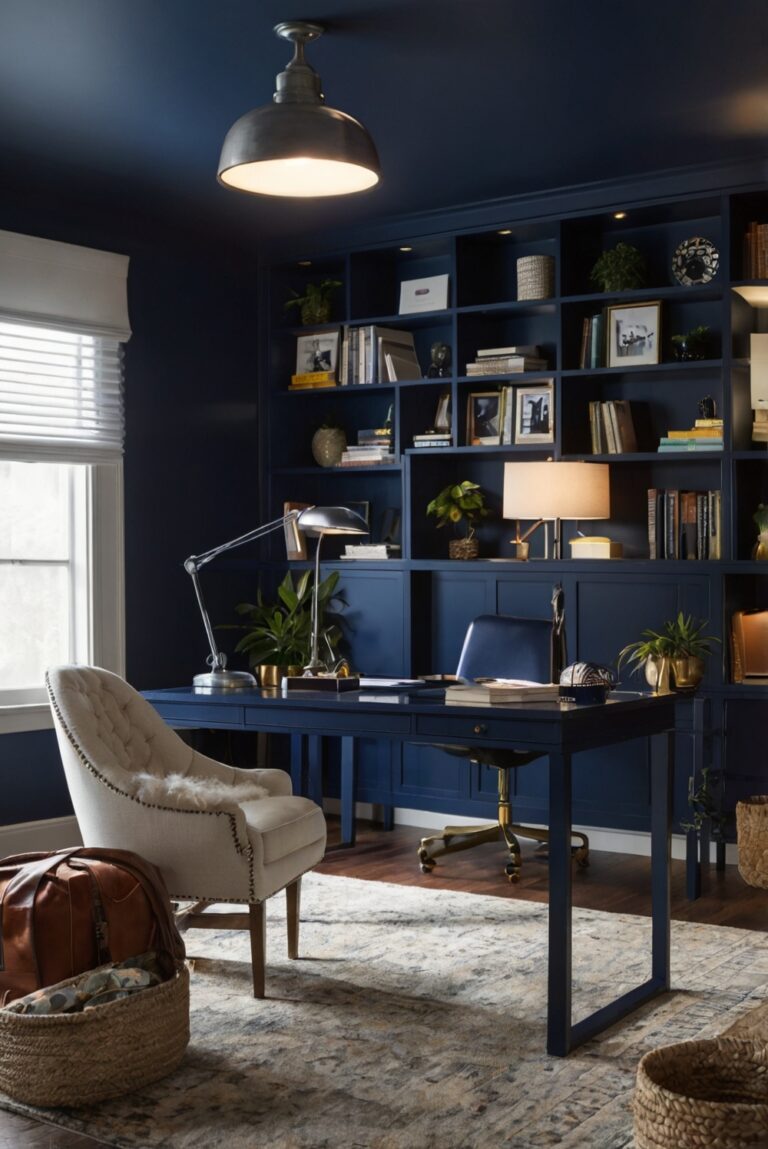Transform your home office with the power of paint! Learn how to create a productive workspace as an interior designer shares daily routine tips.
To create a productive workspace in your home office using paint, you can start by selecting paint colors that promote focus and creativity, such as light blues, greens, or neutrals. Use a primer before painting to ensure better adhesion and durability. Consider color matching painting to maintain a cohesive look in your home decor interior design. Additionally, optimize your space planning by choosing furniture that complements the wall colors and allows for efficient movement. Designer wall paint can add a touch of sophistication to your office, while also reflecting your personal style. Organize your workspace with designated areas for different tasks, such as a reading nook or a desk space, promoting a productive environment.
How to Use Paint to Create a Productive Workspace in Your Home Office?
Choose the Right Color Palette:
When it comes to creating a productive workspace in your home office, choosing the right color palette is crucial. Certain colors can have a significant impact on your mood, productivity, and overall well-being. Opt for colors that promote focus, creativity, and energy. Bright and vibrant colors like blue, green, and yellow are known to stimulate creativity and productivity. On the other hand, neutral tones like white, beige, and gray can create a calming and soothing atmosphere. Consider the type of work you do and the ambiance you want to create when selecting the color palette for your home office.
Utilize Accent Walls:
Accent walls can add depth, character, and visual interest to your home office. They are a great way to incorporate bold colors or patterns without overwhelming the space. Consider painting one wall in a vibrant hue or using wallpaper to create a focal point in your workspace. Accent walls can help define different areas within your home office, such as a work area, a reading nook, or a relaxation corner. Experiment with different colors and textures to find the perfect accent wall that complements your overall design scheme.
Maximize Natural Light:
Natural light plays a crucial role in creating a productive workspace. It can boost your mood, enhance concentration, and reduce eye strain. When painting your home office, consider maximizing natural light by choosing light colors that reflect and amplify sunlight. Opt for light shades of paint that can brighten up the space and make it feel more spacious. Position your desk near a window to take advantage of natural light and create a well-lit environment for work. Avoid blocking windows with heavy curtains or furniture to ensure ample natural light flows into your home office.
Consider Ergonomics:
Creating a productive workspace in your home office goes beyond just painting the walls. Consider the ergonomics of your workspace to enhance comfort and efficiency. Invest in a comfortable chair that supports your posture and reduces the risk of back pain. Ensure that your desk is at the right height to prevent strain on your neck and shoulders. Organize your workspace in a way that promotes good posture and reduces physical discomfort. Incorporate ergonomic accessories like a keyboard tray, monitor stand, or footrest to create a healthy and productive work environment.
Add Personal Touches:
Personalizing your home office with meaningful decor can boost your motivation and productivity. Consider incorporating personal touches like family photos, inspirational quotes, artwork, or plants to create a welcoming and inspiring workspace. Hang a bulletin board or a magnetic wall to display reminders, to-do lists, and motivational quotes. Customize your workspace with items that reflect your personality and interests to make it a place where you enjoy spending time. Adding personal touches can make your home office feel more inviting and conducive to productivity.
In conclusion, using paint to create a productive workspace in your home office involves careful consideration of color palettes, accent walls, natural light, ergonomics, and personal touches. By choosing the right colors, maximizing natural light, incorporating accent walls, focusing on ergonomics, and adding personal touches, you can transform your home office into a space that enhances your productivity and well-being. Experiment with different paint colors, textures, and decor elements to design a workspace that suits your needs and preferences. Remember that a well-designed home office can have a positive impact on your work performance, creativity, and overall satisfaction.
1. What are the best paint colors for a productive home office?
Choosing the right paint colors for your home office can significantly impact your productivity. Opt for calming and neutral tones like light blues, soft greys, or warm whites. These colors can help create a peaceful and focused atmosphere. Avoid loud and distracting colors that may hinder concentration. Consider incorporating accent walls in a bold color to add a touch of energy to the space without overwhelming it.
2. How can paint affect productivity in a home office?
The color of your home office walls can have a profound impact on your productivity. Studies have shown that certain colors can boost creativity, focus, and overall work performance. By choosing the right paint colors, you can create a conducive environment that enhances your ability to stay on task and be productive throughout the day.
3. Are there specific painting techniques that can increase productivity in a home office?
In addition to choosing the right paint colors, you can also utilize painting techniques to enhance the productivity of your home office. Consider using different finishes like matte or satin to reduce glare and create a soothing ambiance. You can also experiment with accent walls, stripes, or geometric patterns to add visual interest and stimulate creativity. Remember to balance aesthetics with functionality to create a workspace that promotes productivity.
4. How can natural light and paint work together to create a productive workspace?
Natural light plays a crucial role in boosting productivity and overall well-being in a home office. To maximize the benefits of natural light, choose paint colors that complement and enhance the brightness of the space. Lighter shades like off-whites, pale yellows, or soft greens can help reflect natural light and create an airy, uplifting atmosphere. Consider positioning your desk near a window to take advantage of the natural light while incorporating paint colors that amplify its effects.
5. What are some additional tips for using paint to create a productive workspace in a home office?
In addition to choosing the right paint colors, there are several other strategies you can implement to create a productive workspace in your home office. Consider incorporating plants, artwork, or inspirational quotes to personalize and energize the space. Invest in ergonomic furniture and organize your supplies to optimize functionality and minimize distractions. Experiment with different lighting solutions like task lamps or overhead fixtures to tailor the ambiance to your specific work needs. By combining these elements with the right paint colors, you can transform your home office into a productive and inspiring environment.
